Carrot Fly (Psila rosae): [Characteristics, Detection, Effects and Treatment]
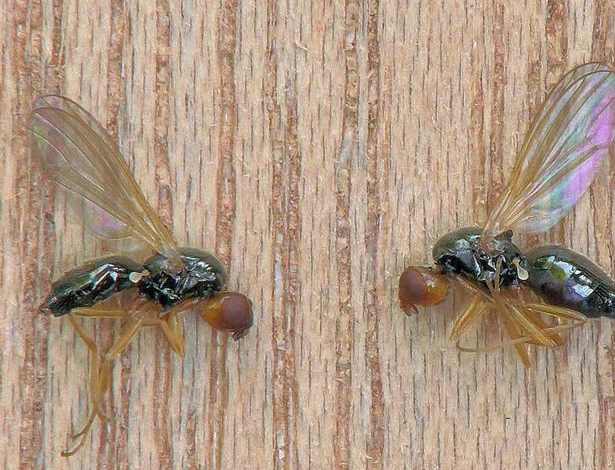
What is the carrot fly?
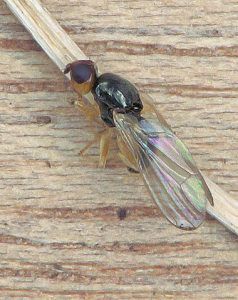 The Psylla rosae or carrot fly, is one of the most terrible pests that mercilessly attacks the plantations of various vegetables, not only the nutritious carrots.
The Psylla rosae or carrot fly, is one of the most terrible pests that mercilessly attacks the plantations of various vegetables, not only the nutritious carrots.
When it infects young plants, it denies them the possibility of having normal growth, but it is much more lethal when attacks occur close to harvest time, because the plant then develops a secondary type of rot that damages the carrot in the soil and during storage..
As occurs with the potato tuber moth, the larvae of this repulsive fly enter the tubers to dig tunnels or galleries, in order to feed, very comfortably installed.
Like the fly that oviposits in the soil, the greatest damage will be the responsibility of the larva, because it penetrates the root to steal substrates by making those galleries that are the best breeding ground for rotting of the rhizomes later.
The worst comes later, thanks to these wounds, other pathogenic agents will enter that cause the rotting of the roots of the plant, then causing great damage that will mean the ruin of the plantation, with the usual implicit economic loss when the insect pests they become unmanageable.
How can we identify it?
This insect has very well defined characteristics. Let’s see which are the most outstanding.
- Adult flies are no more than 4.5 mm in size, with a black body, brown or brown head, elongated abdomen, and yellow legs with iridescent wings.
- The larvae have a whitish-yellowish appearance, but are shiny and are about 7-8 mm long, characterized by overwintering in the soil when they are pupae, until they come to life in spring.
- They are capable of laying their eggs not only in the soil, but also in crops and quickly, between 10-12 days, the larvae will enter the roots until they dig galleries that reach the end of the rhizomes, impacting them very negatively.
- Then the nymphs appear, which barely live for about a month to give way to adult specimens of great care, because they are voracious.
 When the larvae begin to burrow into the lower surface of carrots, a typical rust-brown discoloration occurs, a situation that will make the carrot taste very unpleasant, should the plant survive the attack.
When the larvae begin to burrow into the lower surface of carrots, a typical rust-brown discoloration occurs, a situation that will make the carrot taste very unpleasant, should the plant survive the attack.
Another consequence is that the plants stop growing and the carrots will assume a bulbous appearance that indicates the seriousness of the matter, acquiring important deformations that will prevent their subsequent commercialization.
In the same way, the foliage becomes withered, discolored, with a rusty appearance that can hardly be overcome, especially in dry environments, because with the damage suffered by the root system, the water does not flow to the plant correctly.
In addition, attacks by fungi and bacteria also occur, which also take advantage of the vitiated environment, until the plant rots and dies.
What plants does the carrot fly affect?
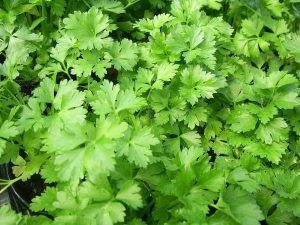 Carrot flies also like to invade other vegetables. Celery, parsley plants and herbs such as dill and fennel often get this terrible infestation.
Carrot flies also like to invade other vegetables. Celery, parsley plants and herbs such as dill and fennel often get this terrible infestation.
They ruin roots and foliage of vegetable crops, although their favorite will always be the carrot, but in reality the fly will attract other harmful pathogens that are the cause of rot, Psylla rosae is not the direct culprit.
How to fight the carrot fly?
There are several mechanisms that work to prevent and prevent carrot crops from being undermined by this powerful pest. Let’s see what are the most common and effective practices in the field to combat them with excellent results.
Crop rotation
This is one of the practices with the greatest burden of prevention, because it prevents new crops from being contaminated by previous pests.
It is necessary to sow in a different space, where the land has been prepared with the support of intensive plowing to give oxygen to the soil and an effective removal of insects and eggs or pupae hidden in the soil.
remove dead plants
Another very important recommendation is to remove all ruined, withered and infected plants from the field quickly, burning these diseased organic remains in order to prevent the proliferation of bugs.A good prophylactic pruning will be essential to take care of the hygiene and health of the place of cultivation.
mesh protection
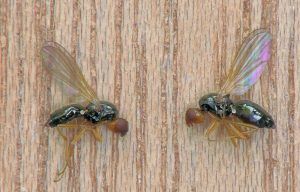 When growing carrots, precautions should also be taken in field and potted crops, covering with a net or mesh to prevent flies from sticking to the foliage of the plants.
When growing carrots, precautions should also be taken in field and potted crops, covering with a net or mesh to prevent flies from sticking to the foliage of the plants.
This type of protection is especially important during the fall, because the activity of the fly and its larvae increases in this period, because their reproduction intensifies at this time.
Protecting seedbeds or seedlings in the same way will also be very important to avoid carrot fly infestations, because they are very attracted by the smell and will fly quickly to lay their eggs in the seed deposits.
Other tips involve the following actions:
- Sowing of garlic plants, interspersed, in order to ward off flies.
- Planting onions also works, because the smell will drive away flies of all kinds.
- Another good trick is to place coffee pots to keep these annoying insects away, as they also act as repellents.
- The soil must be aerated, not only to gain oxygen but also to remove plant debris and eliminate bugs and their young.
What are the best products to eliminate carrot flies?
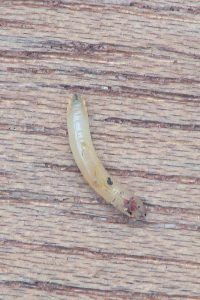 One way to protect the carrot crop is to treat the seeds with insecticides that will protect the plants for about 6-8 weeks.
One way to protect the carrot crop is to treat the seeds with insecticides that will protect the plants for about 6-8 weeks.
The most recommended for this case are diazinon, in presentations called Basudin 10G or Diazinon 10 G, which must be applied in the planting furrows.
These insecticides come in granular formulations.Total disinfection of the land with the following products also gives very good results:
- Dichloropropene.
- methyl bromide.
- metam sodium
Other chemical insecticides used are oxamyl, pyrethrides and carbamates such as methomyl, which help minimize the severe damage caused by the carrot fly to vegetable crops.


![Photo of Elaeagnus: [Characteristics, Care, Planting, Pruning and Problems]](https://www.complete-gardening.com/wp-content/uploads/2022/08/elaeagnus-characteristics-care-planting-pruning-and-problems-390x220.jpg)
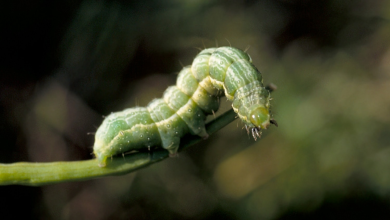
![Photo of Prune Geraniums: [Importance, Time, Tools, Considerations and Steps]](https://www.complete-gardening.com/wp-content/uploads/2022/08/prune-geraniums-importance-time-tools-considerations-and-steps-390x220.jpg)